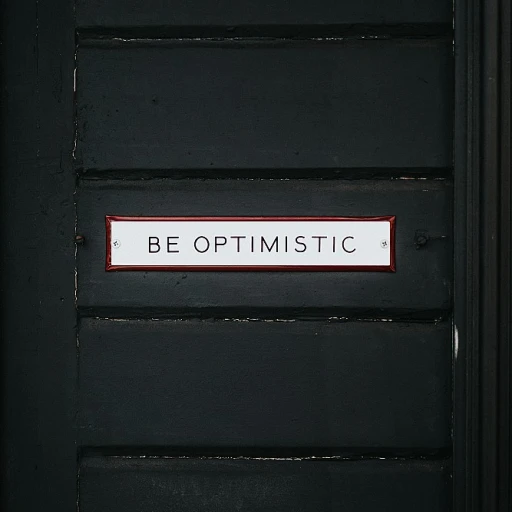
Understanding the Importance of Career Development Programs
Recognizing the Vital Role of Career Advancement Efforts
In today's fast-paced business environment, the significance of career development programs cannot be overstressed. These programs have become an indispensable factor in shaping an organization's success. A robust career development strategy helps retain employees by aligning their professional goals with the company's objectives, nurturing a culture of growth and ambition. Employee development is about more than simply skill acquisition. It encompasses a broad spectrum of growth opportunities, designed to enable employees to progress in their careers while fulfilling personal and professional aspirations. Companies that invest in employee career paths witness elevated engagement levels and job satisfaction. Moreover, development programs serve as a strategic tool to address skill gaps, ensuring the workforce remains ahead in an ever-competitive market. They provide a foundation for both short term improvements and long-term career progression, enhancing workforce productivity and innovation. Organizations must consider crafting comprehensive career paths as part of their development plan. This involves collaborating with employees to identify their career goals and weaving these into broader organizational plans. By doing so, companies create tailored career growth opportunities that genuinely motivate and engage their teams. For businesses to thrive, they need to foster an environment where continuous learning and professional development are prioritized. This not only helps employees advance in their careers but also shapes a vibrant, forward-thinking corporate culture. For further insight into how career development programs align with various roles, such as ServiceNow Administrator Support positions, understanding the prerequisites and required skills can be instrumental in these initiatives.Assessing Organizational Needs and Employee Aspirations
Evaluating Company Needs and Employee Ambitions
To create an effective career development plan, a company must first understand both its organizational requirements and employee aspirations. This dual approach ensures that the development programs not only serve the business's strategic goals but also cater to individual career goals. The key is to strike a balance that fosters both organizational success and employee career growth.
Identifying what the company needs allows the organization to define the skills and competencies necessary for future challenges. It's essential for any development program to be aligned with these strategic objectives. This step involves analyzing current capabilities and determining what skills need to be developed for long-term organizational growth.
Simultaneously, understanding employee aspirations is crucial. Employees are more engaged and motivated when they see opportunities for professional development and career progression. Regularly assessing employee career paths and goals becomes an important part of this process. Surveys, interviews, and self-assessments can be useful tools in gauging these ambitions.
- Consider conducting employee development surveys to gather insights on personal career goals.
- Utilize skills assessments to pinpoint gaps that can be addressed through training development programs.
- Organize workshops or feedback sessions to help employees articulate their career objectives along with the skills they wish to enhance.
Bridging these two aspects—the organizational needs and employee career ambitions—is essential for crafting a comprehensive career development plan. Such initiatives encourage employee engagement and ensure that the organization benefits from a workforce that is capable and motivated. By taking these steps, a company will be well-positioned to help employees achieve their short and long term career aspirations.
For further insights into aligning employee ambitions with organizational goals, consider unlocking potential with a learning consultant to enhance your company’s development strategies.
Designing a Comprehensive Career Development Framework
Crafting a Holistic Approach to Employee Growth
Creating a comprehensive career development framework is paramount for fostering employee career advancement and achieving organizational goals. A thorough and well-structured plan ensures that employees have clear pathways to enhance their skills and reach their career aspirations while also aligning with the company's objectives. A robust career development framework should encompass several critical components:- Defining Clear Career Paths: Start by mapping out potential career paths within the organization. This visual roadmap helps employees envision their long term career progression and sets realistic career goals that align with their professional and personal aspirations.
- Tailoring Individual Development Plans: Customize career development plans to reflect each employee's unique skills, interests, and career objectives. This approach promotes employee engagement by empowering them to take charge of their professional development and pursue short term and long term growth opportunities actively.
- Providing Training and Learning Opportunities: Offer a diverse range of training development programs designed to enhance specific skills and competencies. A mix of workshops, seminars, and online courses, such as exploring alternatives to Tableau for continuous learning, broadens knowledge and prepares employees for future assignments.
- Establishing Mentorship and Coaching Protocols: Facilitate the pairing of employees with seasoned professionals within the company. Mentors provide invaluable insights into career development, bridging the gap between theoretical knowledge and practical application, while personalized coaching fosters resilience and adaptability.
Implementing and Managing Career Development Initiatives
Launching Career Development Initiatives
Implementing a well-structured career development plan requires strategic initiatives that promote employees' professional growth and align with organizational objectives. Creating opportunities for learning and professional development is crucial in aiding employees to achieve their career goals. First, identify and structure training programs designed to enhance specific skills that employees need for career progression. This can involve a combination of formal training sessions, workshops, and on-the-job learning opportunities to broaden their skill sets. Moreover, the role of mentorship should not be overlooked. By pairing experienced professionals with less experienced employees, companies can facilitate knowledge sharing and provide guidance for career paths and professional development.Promoting Employee Engagement
Engaging employees in their development plans is essential to maximizing their career growth. Ensure that employees actively participate in planning their own career development. This could include setting clear career goals, both short term and long term, which are aligned with the organization's objectives. Additionally, creating an environment that supports continuous learning and growth opportunities will encourage employees to stay committed to their development goals. Establishing a feedback mechanism that allows for regular review and adjustment of development plans can reinforce this engagement.Monitoring and Adapting Development Plans
Organizations should maintain flexibility in the career development plans, adapting them as necessary to accommodate changes within the company or the industry. Regular assessments of employee progress are necessary to ensure the effectiveness of these initiatives. To effectively manage career development programs, employee feedback should be integrated to continually refine and improve the strategies in place. By doing so, organizations can better support employees on their journey towards achieving their desired career outcomes.Measuring the Impact of Career Development Programs
Evaluating the Success of Career Development Initiatives
Understanding whether a career development program is creating the desired impact within a company involves a careful evaluation process. These initiatives are not just about helping employees enhance their skills and adapt to evolving career paths, but also about aligning them with the organization’s overarching goals.To gauge the success of these programs, it's important to consider both qualitative and quantitative metrics. Here are some key methods to measure their impact effectively:
- Employee Engagement and Satisfaction Surveys: Conduct regular surveys to gather feedback from employees regarding their development plans. Understanding how employees perceive the growth opportunities provided can help identify areas for improvement.
- Progress Tracking and Performance Metrics: Establish benchmarks and regularly track the progress of participating employees. Evaluate how their skills, job performance, and career progression have evolved after participating in the program.
- Career Goals Achievement: Match the achievement of employee career goals with their initial development plans. Analyze what percentage of employees have successfully advanced toward their desired career paths.
- Promotion and Retention Rates: High employee retention and promotion rates usually indicate that your development program is aligning well with professional growth opportunities. Elevated retention suggests strong employee engagement and satisfaction with career progression.
- Return on Investment (ROI): Calculate the economic impact of the program in relation to its cost. A positive ROI is indicative of a successful integration between employee development and organizational growth.
By aligning these measures with the long-term goals of both employees and the organization, you can ensure that the career development initiatives result in sustainable growth and satisfaction, ultimately contributing positively to the company’s success. These findings will also provide insights into potential improvements and highlight areas where the development program exceeds expectations.
Overcoming Challenges in Career Development Implementation
Tackling Common Obstacles in Building Effective Career Development Programs
Creating and nurturing career development programs within a company is a commendable endeavor but comes with its own set of challenges. Here’s how organizations can address common obstacles to ensure these programs reach their full potential.- Alignment with Organizational Goals: One of the key hurdles in implementing these programs is ensuring alignment with the company’s strategic objectives. It is crucial to establish clear connections between employee aspirations and overarching business goals. This alignment can be achieved by ensuring career paths are designed to meet both employee growth opportunities and organizational needs.
- Lack of Resources: Often, companies face resource constraints when developing comprehensive employee development plans. Overcoming this requires a strategic allocation of resources and, potentially, innovative alternate methods like online training programs, mentorship initiatives, and harnessing internal expertise to facilitate career progression.
- Employee Engagement: Ensuring employee engagement in development programs is essential yet challenging. Employees must perceive these initiatives as truly beneficial for their career growth. Communicating the long term career benefits and offering personalized development plans is imperative to foster a culture of active participation.
- Tracking Progress: Evaluating the effectiveness of employee career development programs can be complex. It's important to set measurable objectives and establish metrics to monitor progress. Doing so will help the organization make necessary adjustments to the development plan, maintaining its relevance and impact.
- Overcoming Resistance: Change resistance can impede the success of career development efforts. Organizations should anticipate hesitation and address concerns proactively by involving employees in the planning process, promoting buy-in, and demonstrating the value these plans bring to their professional development.












